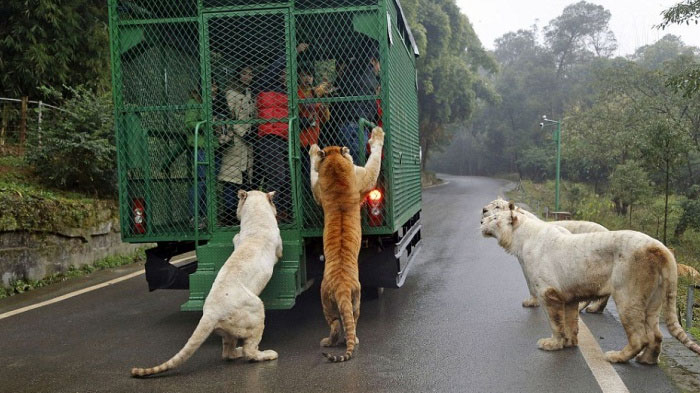When we visit animals at the zoo, we have the opportunity to be voyeurs and we convince ourselves that they don’t mind- after all we are getting an education. But the truth is that its a cruel and unhealthy practice for the animals. Thankfully, a zoo in China is switching it up by having the visitors in the cages when they go see animals.
In Chongqing City, China, at the Lehe Ledu Wildlife Zoo, visitors pay to travel through in a caged while the animals roam free around them. Visitors have a chance to get up close and personal with the wild and sometimes ferocious animals and the animals have the freedom to walk around the parks without being in an enclosure.
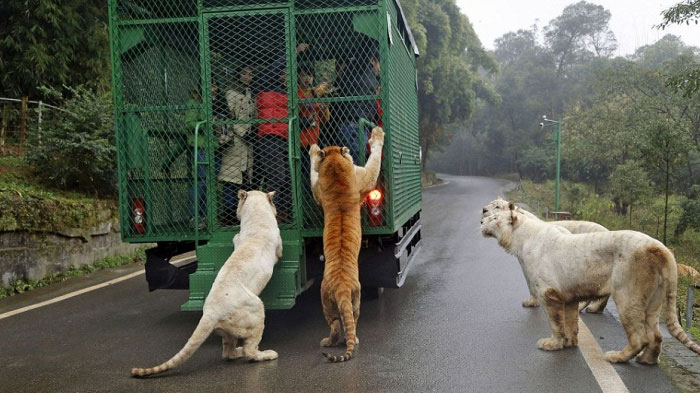 As you can see from pictures, the people are safe inside the caged area, and can leave whenever they want. Compare that to a zoo where the animals are cooped up all day long in their cages. For their entire lives.
As you can see from pictures, the people are safe inside the caged area, and can leave whenever they want. Compare that to a zoo where the animals are cooped up all day long in their cages. For their entire lives.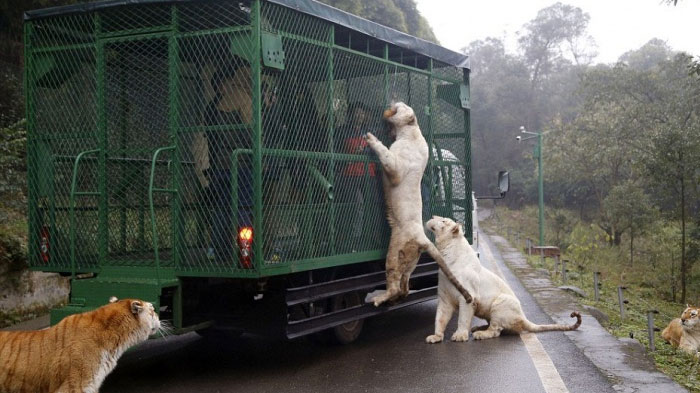
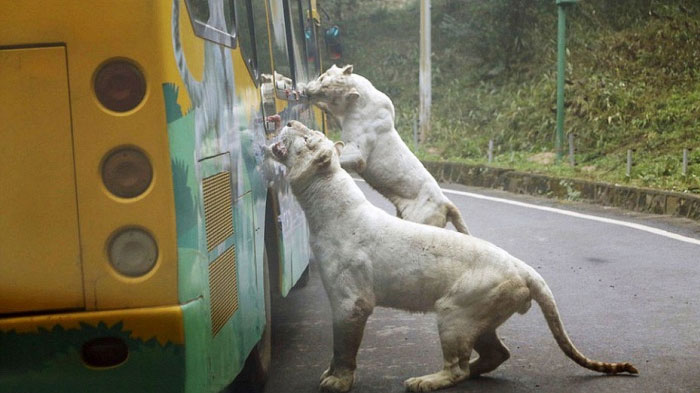
As you can imagine, the zoo is an enormous hit with locals and tourists, and was even sold out for three straight months when it first opened.
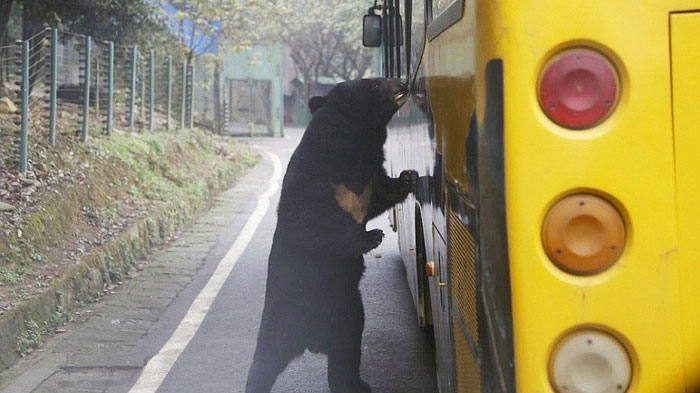
I hate seeing sweet animals in captivity (check out this page here to learn about how terrible their lives can be in an enclosure). To deal with their captive lives, many animals cope with un-stimulating or small environments through stereotypic behavior, or repetitive behavior that serves no obvious purpose, such as pacing, bar biting, etc. Sadly, trichotillomania (repetitive hair plucking) and regurgitation and re-ingestation (the practice of repetitively vomiting and eating the vomit) are also common in captivity. Temple Grandin and Catherine Johnson, authors of Animals Make Us Human, say that in truth, these behaviors, “almost never occur in the wild.” But for those in captivity, these behaviors are so common they have a name: “zoochosis,” or psychosis caused by confinement.
Another stressor in zoos is the disruption of family or pack units for the sake of breeding, especially in species that form close-knit groups, such as gorillas and elephants. What zoos do in breeding programs (which are overseen by the Association of Zoos and Aquariums’ Animal Exchange Database) is move animals around the country when they identify a genetically suitable mate. From the Slate article:
“Tom, a gorilla featured in Animal Madness, was moved hundreds of miles away because he was a good genetic match for another zoo’s gorilla. At the new zoo, he was abused by the other gorillas and lost a third of his body weight. Eventually, he was sent back home, only to be sent to another zoo again once he was nursed back to health. When his zookeepers visited him at his new zoo, he ran toward them sobbing and crying, following them until visitors complained that the zookeepers were “hogging the gorilla.”
If we love animals, the best way to see them is for us to be in cages in THEIR natural environment. Or, in documentaries. But NOT in zoos. And how will zoos hear our true feelings on the matter? By not visiting them and paying for this madness to continue.
XO- Erin



